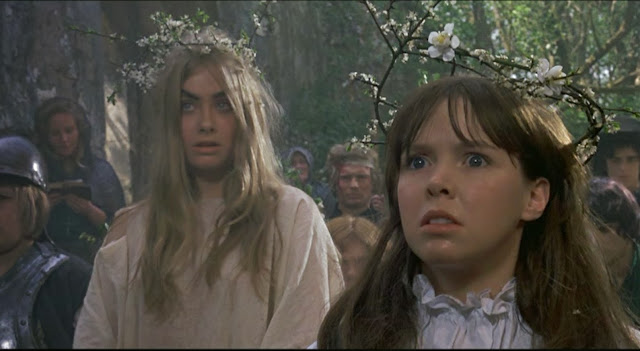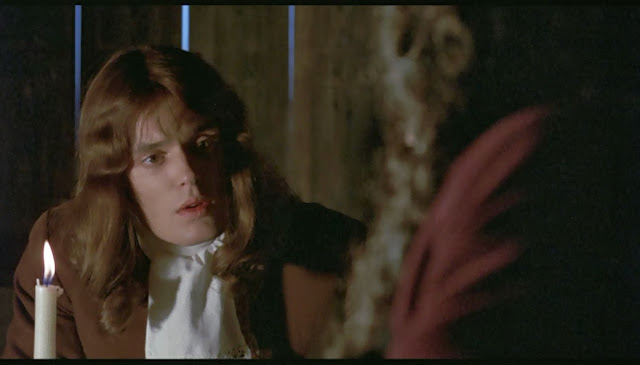Night of the Demon (1957)
Night of the Demon is one of the most lauded of all British horror films. After all, it has a great cast, a truly scary villain, some truly eerie moments, is based on top quality source material (Casting of the Runes by M.R. James) and was directed by Jacques Tourneur - one of the true greats of 20th Century cinema. But what else does it have?
 |
| The least scary demon in the history of cinema |
She was right.
I looked at this scene, a the demon tears Niall McGinnis apart ..
 |
... and all I could think of was the Chewits Monster eating tower blocks in a 1970s sweets advert:
 |
| The Chewits Monster |
The notes accompanying the DVD release indicate that Tourneur didn't want to use a demon, preferring to simply let the audience imagine its own demon. If so, he was right. If not, and he did have a hand in including this dreadful monster, then he sullied his own reputation.
But let's not dwell on that (even though, I'll say it again, the monster is laughable) since the rest of the film has so much to commend it. I first saw a version of this story in 1979 on British television, starring Jan Francis and Iain Cuthbertson. It was splendid and is well worth tracking down. Everything about the story - with its tension and final twist - struck me and remained with me until a few years later when I saw Night of the Demon on a late night BBC2 horror double bill (with The Ghoul, if I remember correctly).
Despite my earlier comments about Jacques Tourneur and the inclusion of the monster, the director showed all those touches an audience would expect from the man who directed Cat People. He doesn't need monsters when he can chill us with shadows ...
... build tension with sounds ringing around a darkened corridor ...
 |
| Dana Andrews |
... and mystify us with a view of a briefcase ...
 |
| Dana Andrews |
... and intrigue us with distortion:
More than anything, I jumped when a hand suddenly appeared on a banister:
That's how to scare me, not with the Chewits Monster:
Enough complaining, here's the pick of the cast:
 |
| Dana Andrews (we know he's questioning his beliefs, he's looking in a mirror) |
 |
| Niall MacGinnis (we know he's evil, he has an evil beard) |
 |
| Peggy Cummins |
 |
| Liam Redmond |
 |
| Percy Herbert in a small role: Herbert became a regular in British films and TV through the sixties and seventies |
Out of interest here's 'Lufford Hall' the residence of the evil Dr Karswell (Niall MacGinnis):
Or as it's really known, Brocket Hall, near Welwyn Garden City:

































































